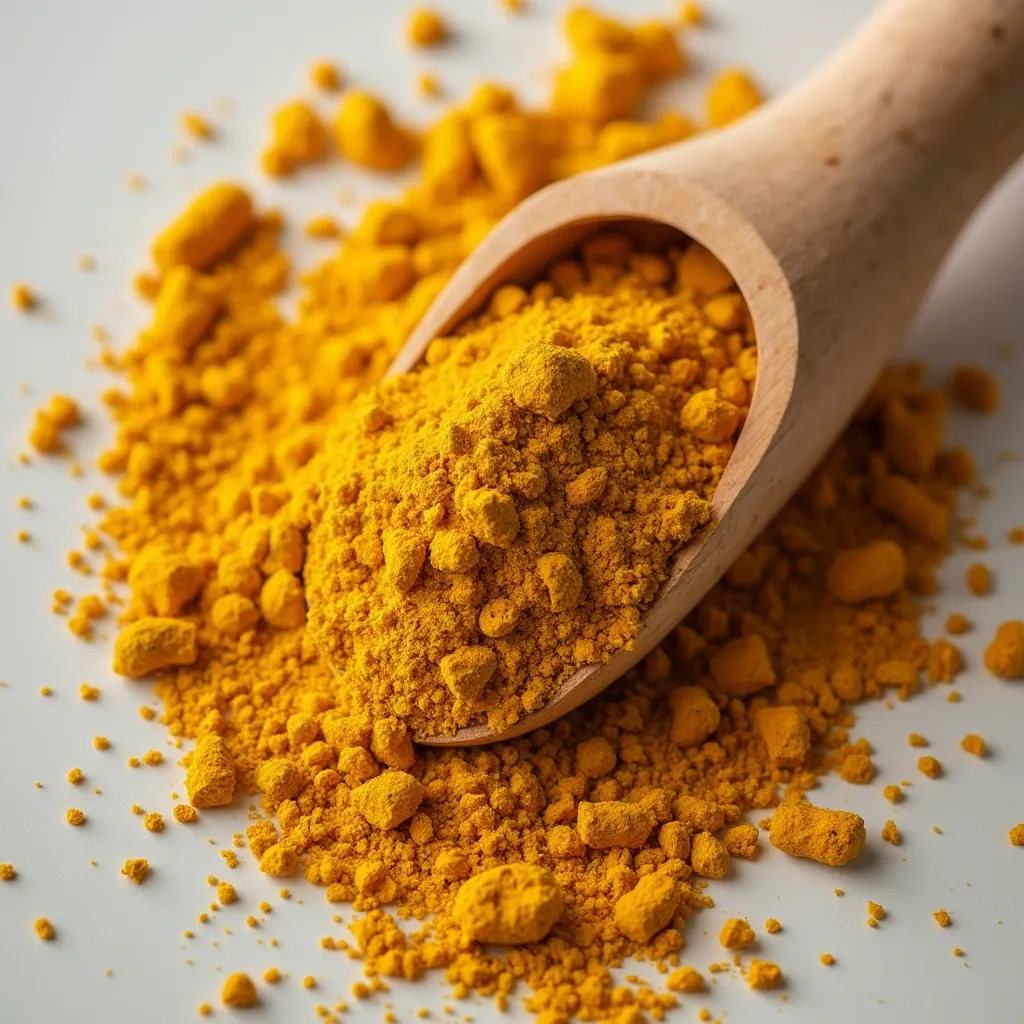Many people deal with knee pain from arthritis, and while medicine can help, it often comes with side effects. Because of this, scientists have been looking at natural options, and one that stands out is turmeric. This bright yellow spice is commonly used in cooking, especially in South Asian food, and has been used for centuries in traditional medicine.

Why Is Knee Pain So Common?
Arthritis is the most common joint problem in the United States, and it often starts in the knees. Research shows that over 10% of men and 13% of women over 60 have knee pain due to arthritis. In general, about 20% of Americans say they experience some level of knee pain, from mild discomfort to severe pain that makes moving difficult.
Many people take NSAIDs (like ibuprofen or diclofenac) to relieve pain, but these drugs can cause problems for people with heart or kidney issues. Because of this, some look for safer, natural alternatives.
Can Turmeric Work as Well as Medicine?
A study “Safety and efficacy of curcumin versus diclofenac” tested turmeric against diclofenac, a common pain reliever. The study included 139 people with knee osteoarthritis. They took either:
- 500 mg of turmeric (curcumin extract) three times a day, or
- 50 mg of diclofenac twice daily.
Both groups reported less knee pain, but the turmeric group had fewer side effects. This suggests that turmeric could be a good option for people who can’t take NSAIDs.
Another study in the Annals of Internal Medicine looked at 70 people over 40 with knee arthritis. They took 1,000 mg of turmeric a day or a placebo for 12 weeks. The turmeric group had much less pain than the placebo group.
Is Turmeric Safe to Take?
One big advantage of turmeric over NSAIDs is that it’s generally safe. While too many NSAIDs can cause kidney damage or stomach problems, turmeric is much easier on the body.
However, taking too much can still cause problems. Some people who took over 4,000 mg per day reported mild side effects like headaches, diarrhea, and skin rashes. Turmeric is also high in oxalates, which can lead to kidney stones in large amounts.
Turmeric may also thin the blood, which can be dangerous for people on blood thinners. If you’re thinking about taking turmeric for joint pain, talk to your doctor first to make sure it’s safe for you.
What’s the Best Way to Take Turmeric?
Experts say it’s better to eat turmeric in food rather than just taking supplements. But to get the most benefits, you need to help your body absorb it better. The best ways to do this are:
- Eat it with fats or oils, since curcumin dissolves in fat.
- Add black pepper, which has piperine. This compound helps the body absorb curcumin up to 2,000% better.
Dietitians from this study, says it’s important to use high-quality turmeric powder to avoid contamination. Also notes that while turmeric powder is great for everyday cooking, extract-based supplements have higher amounts of curcumin, which may work better for pain relief. Here are a few easy and delicious ways to add turmeric to your life:
Golden Milk
Golden milk is a traditional drink made with turmeric, milk (or a plant-based alternative), black pepper, and honey. The black pepper enhances the absorption of curcumin, making it even more effective. It’s a soothing, anti-inflammatory drink that can be enjoyed any time of day. How to make golden milk:
- 1 cup of milk (or almond/coconut milk)
- 1 teaspoon turmeric powder
- A pinch of black pepper
- Honey or maple syrup to taste
Heat the milk, add the turmeric and black pepper, and stir until well combined. Sweeten with honey or maple syrup if desired, and enjoy this anti-inflammatory drink that’s gentle on your knees.
Turmeric Tea
For those who love a warm cup of tea, turmeric tea is an excellent way to incorporate this powerful spice into your routine. It’s easy to make and provides both comfort and relief for your knees. How to make turmeric tea:
- 1 cup hot water
- 1 teaspoon turmeric powder
- Honey or lemon for flavor
Steep the turmeric powder in hot water for about 5 minutes, then add honey or lemon to taste. This tea is perfect for sipping before bed or as an afternoon pick-me-up.
Can Changing Your Diet Help With Knee Pain?
Besides turmeric, studies show that eating the right foods can help reduce arthritis pain. The Mediterranean diet, which includes lots of fruits, vegetables, whole grains, and healthy fats, has been linked to:
- Lower inflammation
- Less obesity, which puts stress on joints
- Better joint health and overall quality of life
This diet is rich in polyphenols, plant compounds that help reduce swelling and protect cartilage. Because of this, many experts believe it can slow arthritis progression.
The Bottom Line
Turmeric is a natural way to relieve joint pain, and research shows it has anti-inflammatory and pain-fighting effects. While it won’t cure arthritis or repair joint damage, it may help people manage pain, especially those who can’t take NSAIDs.
As with any supplement, it’s important to talk to your doctor first, especially if you’re on blood thinners or have kidney issues.
If you’re looking for a simple, natural way to support joint health, try adding turmeric and Mediterranean-style foods to your diet. It might make a big difference! For more insights on turmeric and its impact on joint health, explore this article.
